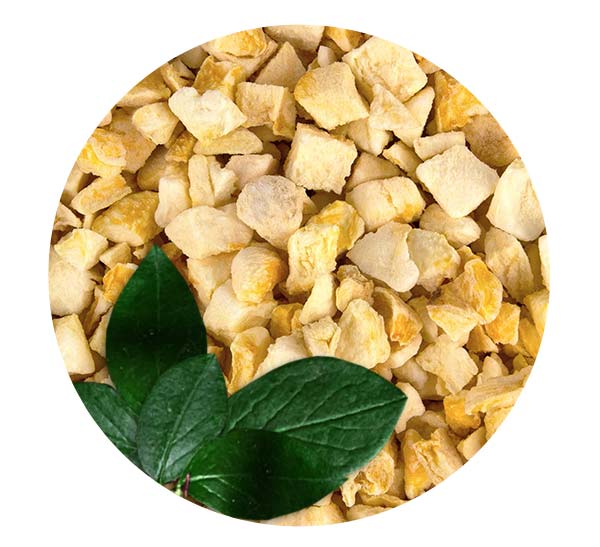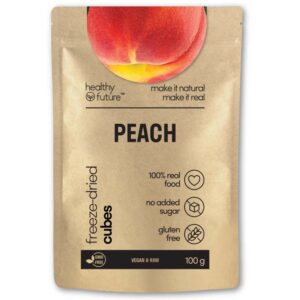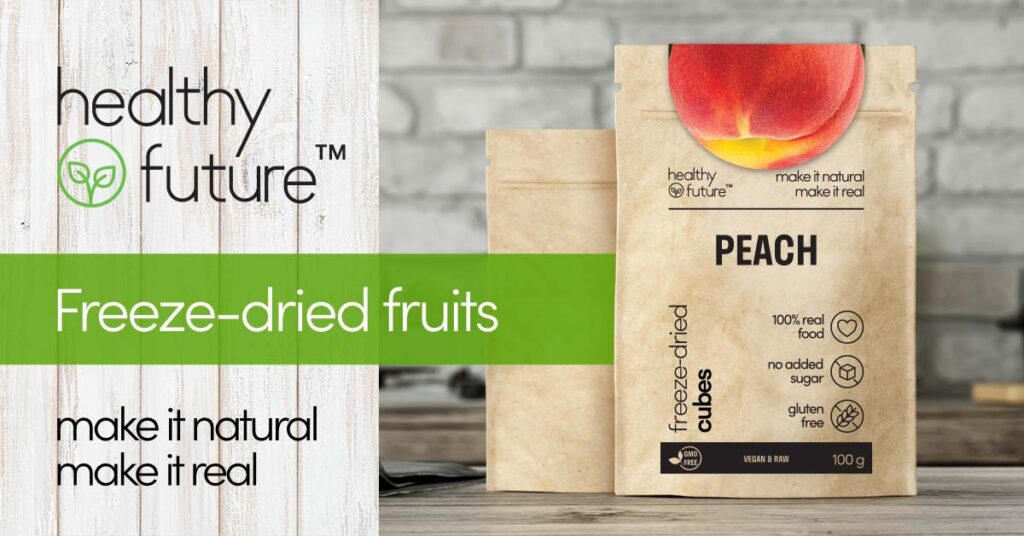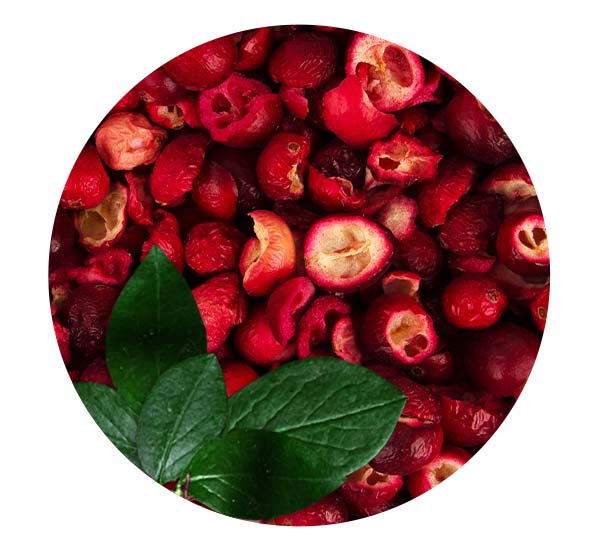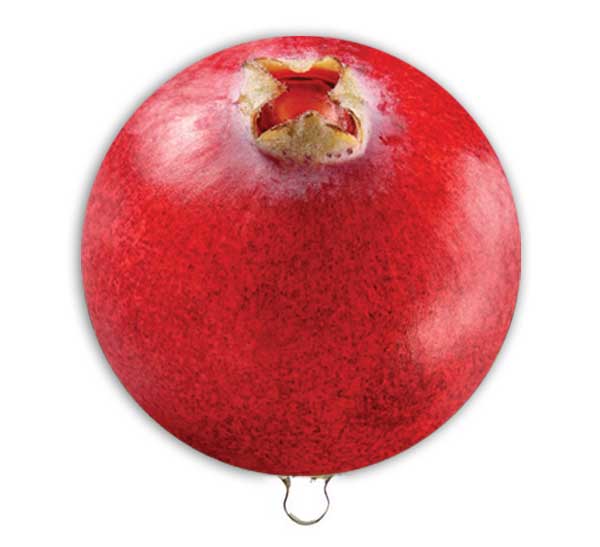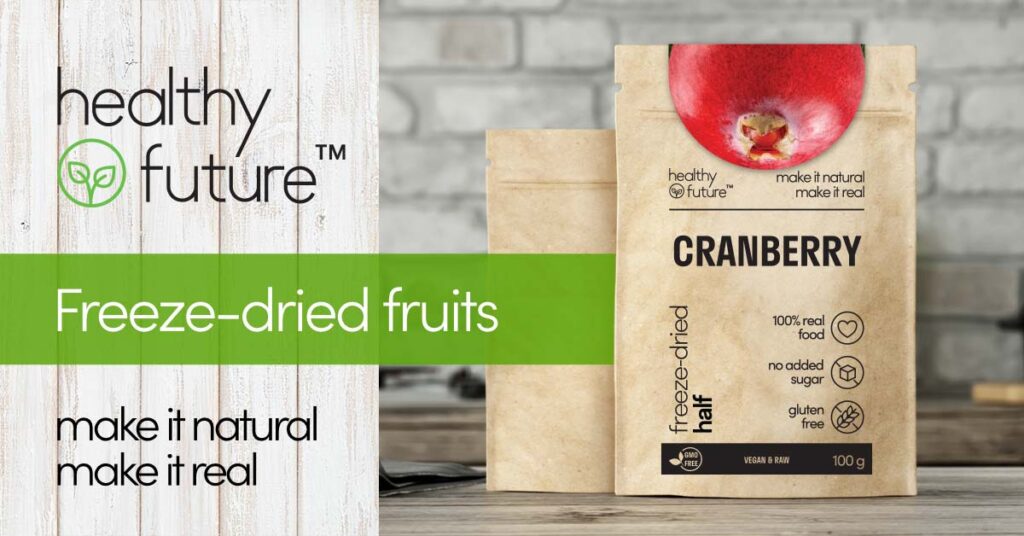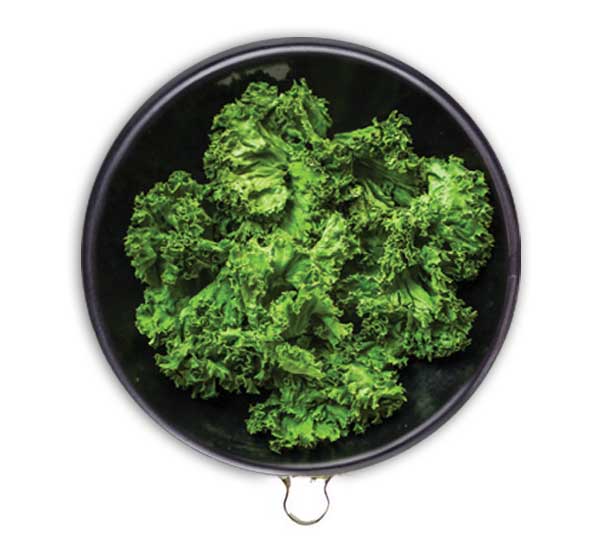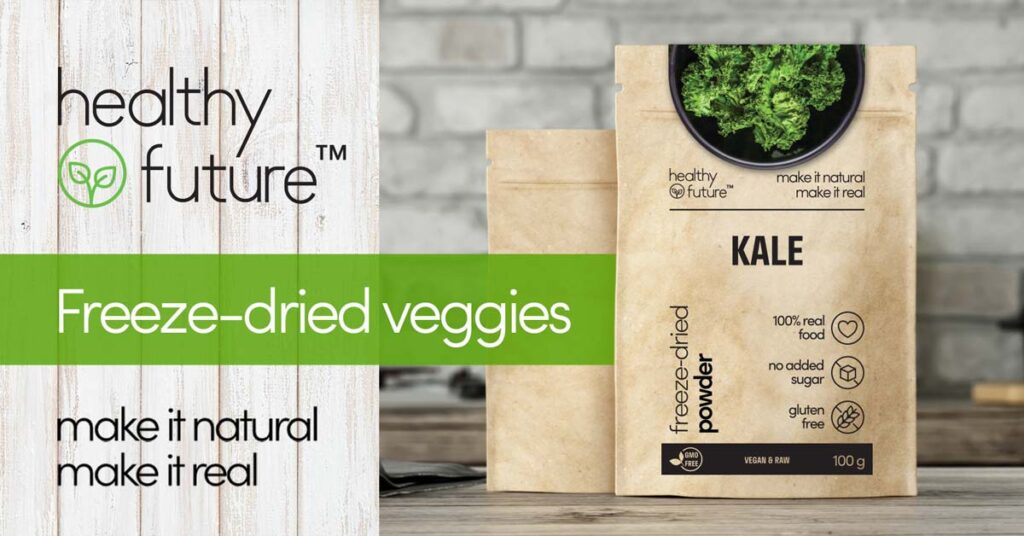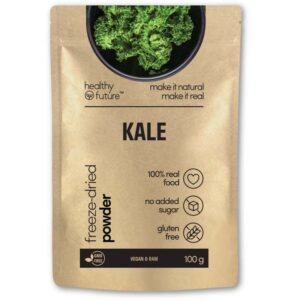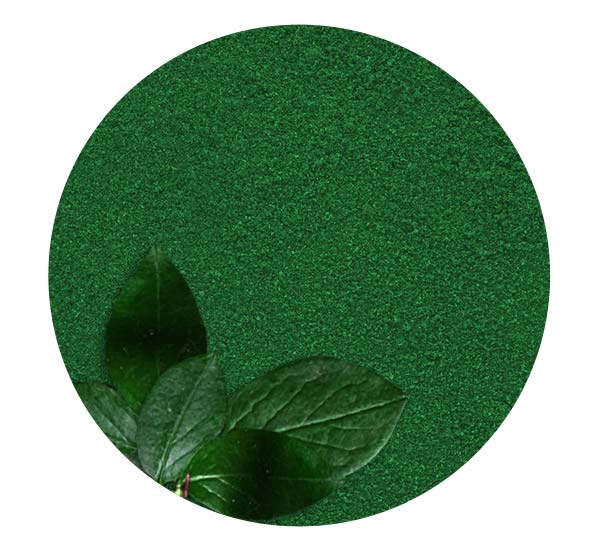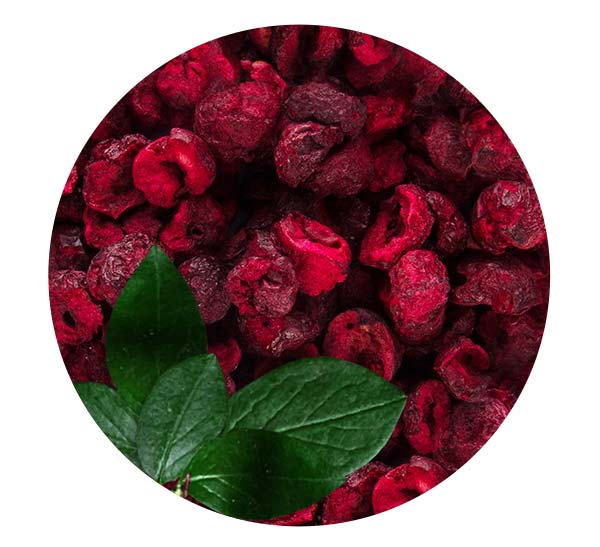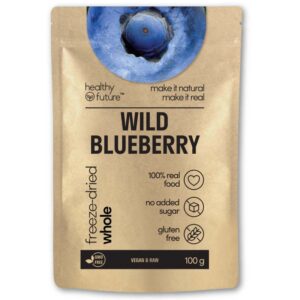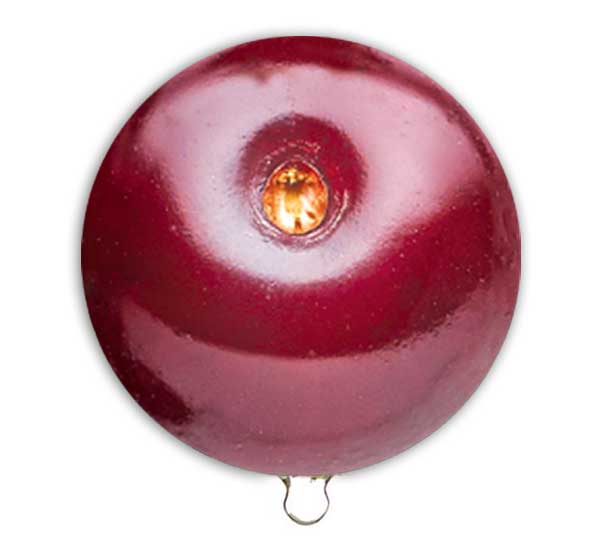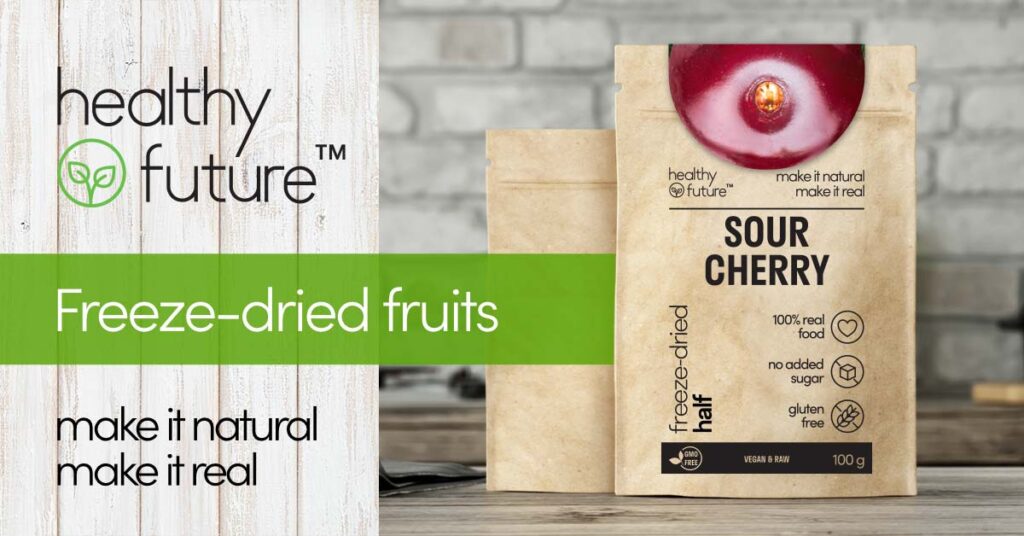Why is freeze dried fruit so expensive?

Why is freeze dried fruit so expensive?
🍓The real cost of freeze-dried fruit🍓
Have you ever wandered through the aisles of your local health food store or browsed through an online shop with freeze-dried food, 👀 spotted a pack of freeze-dried strawberries, and wondered why 500g can cost £43 or more? Why are freeze dried strawberries so expensive? Why is freeze dried fruit so expensive in general? 🤔 You’re not alone in this thought. However, this pricing is not as outlandish as it might seem at first glance.
In this article, we’ll delve into the fascinating world of freeze-dried fruits, particularly strawberries, to uncover why they command such a price and why they’re worth the investment. Plus, we’ll guide you on where you can buy freeze-dried strawberries, raspberries or freeze-dried blueberries – these nutritious snacks for kids and yourself!
💰 Why are freeze dried strawberries so expensive? 💰

In the UK, the average cost of fresh strawberries stands at £8.13 per kilogram (March 2024). The price of fresh strawberries varies slightly across Europe, with Germany seeing an average of €9.96 per kilogram and France at €9.13 per kilogram. Considering that 100g of freeze-dried strawberries equates to approximately 1100g of fresh fruits, to produce 500g of freeze-dried strawberries, one would need 5.5kg of fresh, ripe strawberries. In the UK, purchasing 5.5kg of fresh strawberries would cost, on average, £44.71. Thus, when you consider the required amount of fresh fruit to produce freeze-dried strawberries, the cost appears more reasonable.
💎Comparing the cost of a 500g packet of freeze-dried strawberries with 5.5 kilograms of fresh strawberries, the price of freeze-dried strawberries appears justified💎
It’s important to bear in mind that in addition to the cost of the raw materials (fresh, ripe strawberries), there are significant expenses associated with the freeze-drying process, which, regrettably, is not cheap. Indeed, it is considerably more costly than simply drying the fruit.
💰 Why freeze-drying process is expensive itself 💰
The freeze-drying process itself is costly, involving sophisticated equipment, high energy consumption and a time-consuming procedure that ensures the preservation of nutritional values and cell structure. The initial investment in fresh, high-quality fruits and the energy required for freeze-drying contribute to the higher price of the final product.
To comprehend these costs, it’s essential to explore the freeze-drying method. The freeze-drying process, or lyophilisation, is a sophisticated method that removes water from frozen fruits by turning ice directly into water vapour, skipping the liquid phase. This process occurs under vacuum conditions and at low temperatures, ensuring that the fruits’ aroma, taste, texture, shape, colour, flavour and nutritional content are preserved without any additives. You can read more about freeze drying method here.
For instance, to produce 500g of freeze-dried strawberries, approximately 5.5kg of fresh, ripe strawberries are required. This significant weight reduction results from removing water content, leaving behind the fruit’s essence in a much lighter and more concentrated form.
🍓Freeze-dried fruit – nutritional value, longevity & resistance to microorganisms🍓
Freeze-dried fruits retain about 95% of the nutritional and biological value of the fresh product. They are 100% natural, containing no preservatives, colour or flavour enhancers, added sugar, or sulphur. This makes them an excellent, healthy snack option, particularly beneficial for children. Moreover, the reduced moisture content (up to 2%) significantly extends the shelf life of freeze-dried fruits, making them a convenient and long-lasting dietary choice and resistant to microorganisms.
💰 Why is freeze dried fruit so expensive comparing to fresh fruits? 💰
📍Advantages of freeze-dried fruit compared to fresh fruits📍
While fresh fruits are essential for a balanced diet, the unique benefits of freeze-dried fruits provide a complementary option that fits the demands of a busy, health-conscious lifestyle. Whether used as a snack, in recipes, or as a travel-friendly food source, freeze-dried fruits offer a practical and nutritious choice for people of all ages.
In comparison to fresh fruits, freeze-dried fruits stand out for their longevity, convenience, nutritional integrity, versatility, and ease of storage and transportation.
✅Long shelf life: can be stored for years without losing quality, making them a reliable pantry staple.
✅Convenience: always at hand – perfect for making ice cream, shakes, or adding to pancakes and yoghurts, especially handy for quick desserts or snacks for kids.
✅Nutritionally rich: retains up to 95% of the nutrients, including vitamins, minerals, and antioxidants, of the fresh fruits.
✅Versatility: a healthy and perfect snack for kids and adults alike, suitable for taking on the go or as an emergency fruit supply.
✅Ease of storage and transportation: Thanks to their reduced weight and volume.
✅ Healthy snack for kids: incredibly tasty, nutritious and handy!
Below you can find more in-depth the advantages of freeze-dried fruit over fresh fruit – why is freeze dried fruit so expensive comparing to fresh fruits?

One of the most compelling advantages of freeze-dried fruits over fresh fruits is their extended shelf life. Freeze-dried fruits can be stored for years without a significant loss in quality, taste, or nutritional value. This is in stark contrast to fresh fruits, which have a limited shelf life and can spoil within days or weeks, depending on the fruit and storage conditions. The longevity of freeze-dried fruits makes them an ideal pantry staple, ensuring that you always have access to nutritious fruits without the worry of rapid spoilage.
💎2nd advantage of freeze-dried fruit – convenience🍓
Freeze-dried fruits offer unparalleled convenience compared to fresh fruits. They are pre-sliced, peeled (if necessary), and ready to eat, eliminating preparation time. This makes them perfect for quick snacks, emergency food supplies, or as a hassle-free ingredient for shakes, ice cream, pancakes, and yogurts. Fresh fruits, while delicious, require washing, peeling, and slicing, which can be time-consuming, especially when you’re in a rush or on the go.
💎3rd advantage of freeze-dried fruit – nutritionally rich🍓
The freeze-drying process retains up to 95% of the original nutritional content of the fruit, including vitamins, minerals, and antioxidants. This high retention rate ensures that freeze-dried fruits are almost as nutritionally rich as fresh fruits. In contrast, the nutritional value of fresh fruits can diminish over time due to factors like exposure to air, artificial ripening, and prolonged storage, not to mention that fresh fruits often lose some of their nutritional content through the cooking or preparation process.
💎4th advantage of freeze-dried fruit – versatility🍓
While fresh fruits are undoubtedly versatile, freeze-dried fruits offer certain unique applications that fresh fruits cannot. For instance, freeze-dried fruits can be used in baking and cooking without releasing excess water, maintaining the desired texture and concentration of flavours. They’re also an excellent addition to dry mixes, such as muesli or granola. Their lightweight and portable nature make freeze-dried fruits a superior option for hiking, camping, or as a nutritious snack during travel, where carrying fresh fruits might be impractical.
You can read more about Perfect food and snacks for hiking here
💎5th advantage of freeze-dried fruit – ease of storage and transportation🍓
The reduced weight and volume of freeze-dried fruits not only make them easy to store, taking up minimal space in your pantry, but also make them ideal for transportation. They do not require refrigeration, which is often a necessity for preserving the freshness of certain types of fresh fruits (especially berries like strawberries, raspberries, blueberries, blackberries etc). This aspect of freeze-dried fruits offers a significant advantage for those with limited storage space or for those seeking nutritious food options while on the move.
💎6th advantage of freeze-dried fruit – important especially for Mums! 🍓
Freeze-dried fruits emerge as the ultimate snack choice for children for several compelling reasons. Firstly, when fresh fruits are unavailable in the fridge, freeze-dried fruits stand as an excellent alternative, bypassing the common issue of spoilage associated with fresh produce. This quality is particularly beneficial for snacking with small children, ensuring they always have access to nutritious fruit snacks. Furthermore, the convenience factor of freeze-dried fruits cannot be overstated; they are incredibly handy, especially for parents with young children who are already enjoying a variety of solid foods.
🧡If you are a mum, not only your kid will love it but also you will love it! 🧡
Whether you’re heading out for a stroll in the park or simply need a quick and healthy snack option for your kid, freeze-dried fruits are ready to go without the need for preparation or refrigeration. Not only they are one of the healthiest snack options, being rich in nutrients and free from added sugars and preservatives, but they’re also crunchy, delicious and can be taken anywhere. The portability of freeze-dried fruits makes them a hassle-free snack choice for any event, be it an adventure in the playground, a school day, a family picnic or trip, or even a birthday party. They offer a nutritious, delicious, and convenient snack option for busy and health-conscious families.
💰 Why is freeze dried fruit so expensive comparing to dried fruits? 💰

Traditional drying methods do not remove as much water from the fruit as freeze-drying does, resulting in dried fruit that is heavier due to its remaining water content. Consequently, to produce 500g of dried fruit, significantly less raw fruit is needed compared to producing the same amount (i.e. 500g) of freeze-dried fruit. This difference in the quantity of starting material directly impacts production costs, making freeze-dried fruits more expensive.
In summary, the expansiveness of lyophilisation process itself and the larger amount of raw material needed for production are two main reasons why is freeze-dried fruit so expensive compared to dried fruits. This efficiency in water removal not only enhances the quality and shelf-life of freeze-dried fruits – it does much more. Keep reading and find the advantages of freeze-dried fruit compared to dried fruits below.
📍Advantages of freeze-dried fruit compared to dried fruits📍
Freeze-dried fruits offer superior nutritional value, a more natural taste and appearance, and longer shelf life without the need for additives. Dried fruits, while still a convenient and relatively healthy option, may contain added sugars and preservatives and have a lesser nutritional profile. For those prioritizing health, natural flavour, and versatility, freeze-dried fruits are the clear winner, offering a nutrient-rich, convenient, and delicious way to enjoy the essence of fresh fruits at any time.
✅Nutritional value: freeze-dried fruits retain about 95% of the nutritional value of fresh fruits, whereas dried fruits only retain about 20%.
✅Additives: freeze-dried fruits contain no added sugar, sulphur, preservatives, or oil, while dried fruits often have added sugar, sulphur, preservatives, and sometimes oil to prevent sticking and preserve appearance.
✅Appearance and texture: freeze-dried fruits maintain their natural look, taste, texture, colour, and aroma without artificial additives, presenting a crunchy and firm texture ideal for meals. Dried fruits, conversely, may become soft and misshapen, often with artificial additives to maintain colour and taste, and are generally more dense and less visually appealing.
✅Shelf life & resistance to microorganisms: when stored properly in a cool, dry place, freeze-dried fruits can last for years (if the package is closed tightly!) due to their almost water-free composition, which makes them resistant to mould, bacteria, and fungi. Dried fruits, with a water content of 30-40%, have a shorter shelf life and are more prone to deterioration.
✅Portability: freeze-dried fruits are incredibly light, portable, and compact, making them an excellent choice for on-the-go snacking. Dried fruits are more dense and less compact in comparison.
✅Rehydration: freeze-dried fruits can be rehydrated very quickly and easily, allowing for versatile use in cooking and baking. Dried fruits require at least a few hours to be rehydrated properly.
✅Allergy and intolerance friendliness: freeze-dried fruits are more suitable for people with allergies and food intolerances due to the absence of added artificial additives, whereas dried fruits’ added substances can be problematic for sensitive individuals.
In summary, why is freeze dried fruit so expensive? The high cost of freeze-dried fruits like freeze-dried strawberries reflects most of all the complex, technologically advanced and energy-intensive process of freeze-drying and the significant amount of fresh fruit required to produce a small amount of freeze-dried fruit. In turn, by buying freeze-dried fruit you will get the numerous benefits they offer, including nutritional value, convenience, and shelf life.
Especially, when you consider the amount of fresh fruit needed and the technology involved, the price begins to make sense. Whether you’re seeking a nutritious snack for children, an emergency fruit supply, or a versatile cooking ingredient, freeze-dried fruits are an investment in your health and convenience.
As consumers become more health-conscious and seek out natural, preservative-free and literally guilt-free snack options, freeze-dried fruits stand out as a premium choice. Next time you see a packet of freeze-dried strawberries with a seemingly steep price tag, asking yourself a question ‘why is freeze dried fruit so expensive?’ just remember the value, nutrition, and technology packed into each bite 😀
🍓Where can you buy freeze-dried fruit? 🍓
For those wondering where to purchase freeze-dried strawberries, raspberries, or other fruits, there are several options. Primarily at health food stores, online freeze-dried food retailers (this is probably the best way to buy cheap freeze dried fruit), and sometimes shops with trekking or hiking equipment – you can often buy a wide range of freeze-dried products. You can also find bulk freeze dried fruit options, which can offer a better value for money.
You do not have to ask Google anymore where can i buy freeze dried raspberries or where can i buy freeze dried strawberries or where can i buy freeze dried fruit in general – from now on you can be sure that you are in the right place 😀
Enjoy browsing our online store to buy the best quality freeze dried raspberries, strawberries, wild blueberries and much more! 💗☀️
Guilt-free food for taste!
100% natural, raw, vegan and real food!
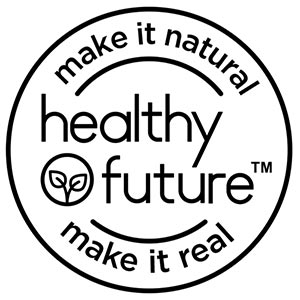

100% real food

Gluten free

No sugar added

GMO free
Why is freeze dried fruit so expensive? Read More »


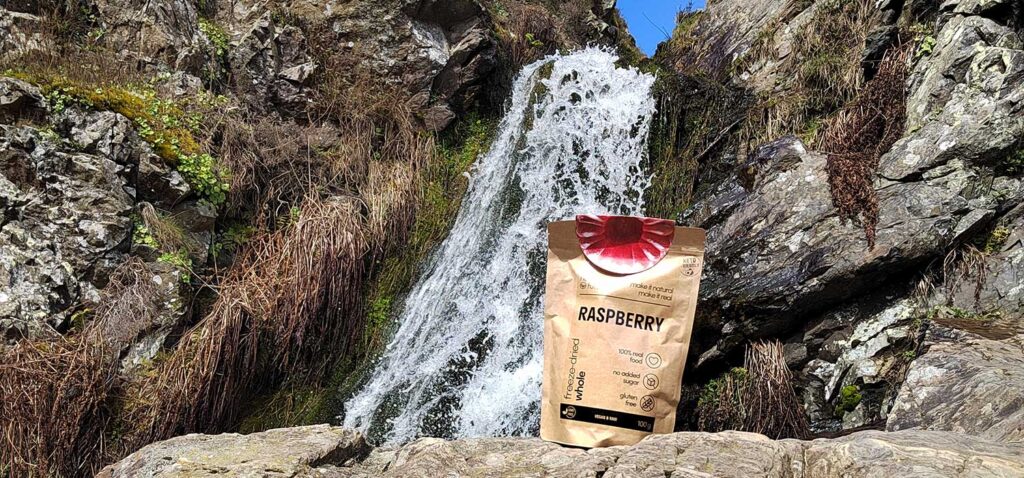
 While dried fruits are a common snack, freeze-dried fruits are superior snacks for hiking, trekking, camping and other outdoor activities. We are sure that freeze-dried fruits are best hiking food – they triumph over dried fruits in many ways. Traditional drying methods involve high temperatures diminishing nutrients and altering taste and texture, whereas the freeze-drying process preserves these qualities. Moreover, freeze-dried fruits are lighter – a critical factor for hikers and campers. Simply, freeze dried food while hiking and camping is the perfect choice.
While dried fruits are a common snack, freeze-dried fruits are superior snacks for hiking, trekking, camping and other outdoor activities. We are sure that freeze-dried fruits are best hiking food – they triumph over dried fruits in many ways. Traditional drying methods involve high temperatures diminishing nutrients and altering taste and texture, whereas the freeze-drying process preserves these qualities. Moreover, freeze-dried fruits are lighter – a critical factor for hikers and campers. Simply, freeze dried food while hiking and camping is the perfect choice.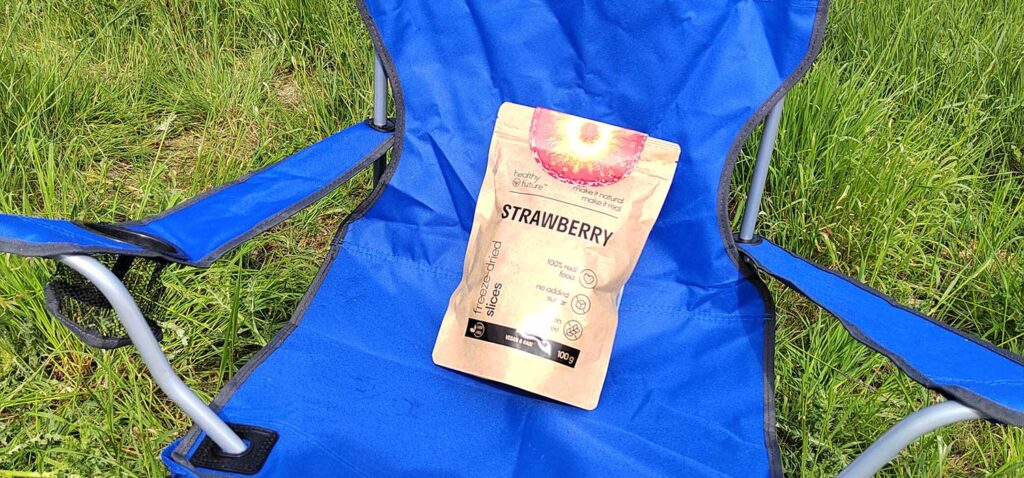
 Long shelf life is another
Long shelf life is another 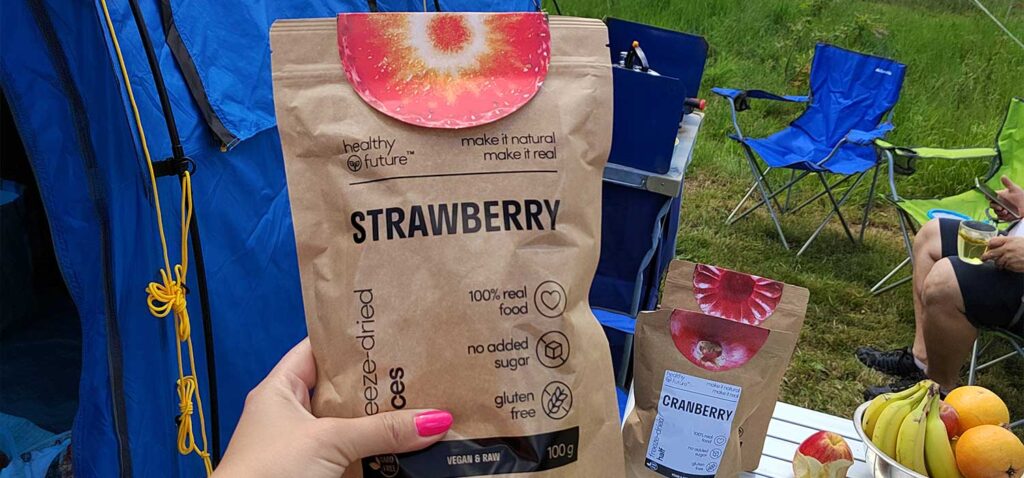
 If you are going to take your child with you for trekking, choosing freeze-dried fruits you can be sure that you give your child a healthy snack. Kids love the most:
If you are going to take your child with you for trekking, choosing freeze-dried fruits you can be sure that you give your child a healthy snack. Kids love the most:  In summary, freeze-dried fruits are an excellent choice for outdoor enthusiasts seeking convenience, nutrition, and variety. Whether you’re scaling mountains, exploring trails, or enjoying a family picnic, our range of freeze-dried fruits,
In summary, freeze-dried fruits are an excellent choice for outdoor enthusiasts seeking convenience, nutrition, and variety. Whether you’re scaling mountains, exploring trails, or enjoying a family picnic, our range of freeze-dried fruits, 